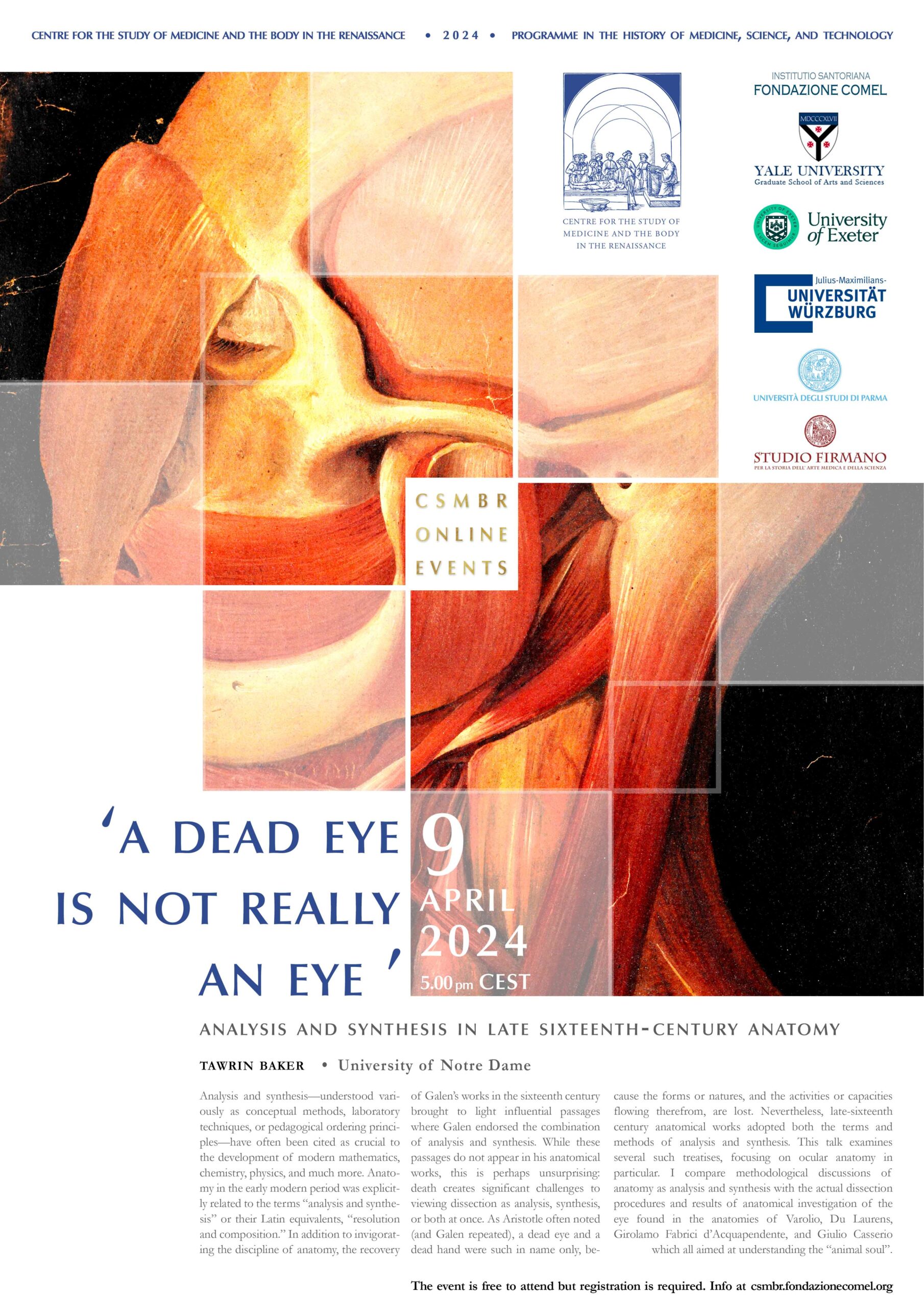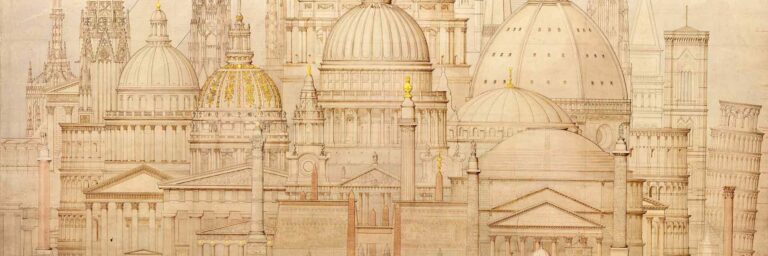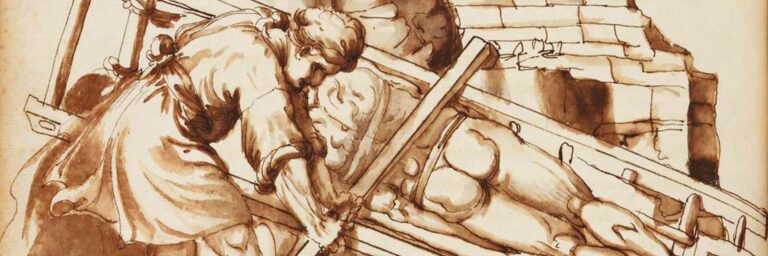Analysis and Synthesis in 16th-Century Anatomy


"A Dead Eye
is not Really an Eye"
Analysis and Synthesis in Sixteenth-Century Anatomy
Tawrin Baker
9 April 2024 – 5 PM (CEST)
Analysis and synthesis—understood variously as conceptual methods, laboratory techniques, pedagogical ordering principles, and more—have been cited as crucial to the development of modern mathematics, chemistry, and physics. This is particularly the case when understood as a complementary pair of operations, e.g., analysis as a method of discovery and synthesis as proof or justification.
Historians and philosophers of science and mathematics have recently noted that the rhetoric and practices surrounding analysis and synthesis (and closely related terms) are far from uniform; determining the actual role that analysis and synthesis, however understood, played in the development of mathematics and the sciences is not straightforward.
The term “anatomy” in the early modern period was likewise multifaceted, and at times it was explicitly understood via the Greek terms analysis and synthesis or their Latin equivalents, namely resolutio and compositio.
This talk examines several late sixteenth-century anatomical works that adopted either the terms and or methods of analysis and synthesis. I compare methodological discussions of anatomy as analysis and synthesis with the actual dissection procedures and results of anatomical investigation of the eye found in those works. The anatomies of Costanzo Varolio (1543–1575), André du Laurens (1558–1609), Girolamo Fabrici d’Acquapendente (1533–1619), and Giulio Casserio (1552–1616) are examined.
The “method of anatomy” was discussed in several ways: as a dissection procedure leading to discovery, with physiological/theoretical implications only implied; as a pedagogical ordering of a text or course on anatomy, where one chooses either the method of analysis or that of synthesis; as art (analysis via dissection) vs. science (conceptual synthesis); as human artifice (analysis) vs. nature’s processes (synthesis as genesis); and finally as an ordered procedure, where one first dissects animal bodies and then conceptually reassembles the newly discovered and understood parts, all with the aim of revealing the nature of the animal soul.
About the Speaker ...
Tawrin Baker is Visiting Assistant Professor in the Program of Liberal Studies at Notre Dame University (US).
He received his PhD in the History and Philosophy of Science from Indiana University, Bloomington. His research focuses on the intersection of anatomy and medicine, natural philosophy, and mathematics in the early modern period. Projects include a monograph, currently titled Chiasmata: Visual Theory in the Intertwined Histories of Anatomy, Natural Philosophy, and Optics, 1500–1650, as well with a complementary project examining the (related, but independent) history of diagrams and pictures of the eye during roughly the same time period. He is also in the early stages of a project investigating shifts in the methods in comparative anatomy during the sixteenth and seventeenth centuries, and the relevance of this shift for debates concerning human vs. animal speech.







